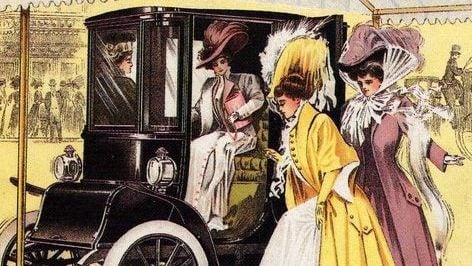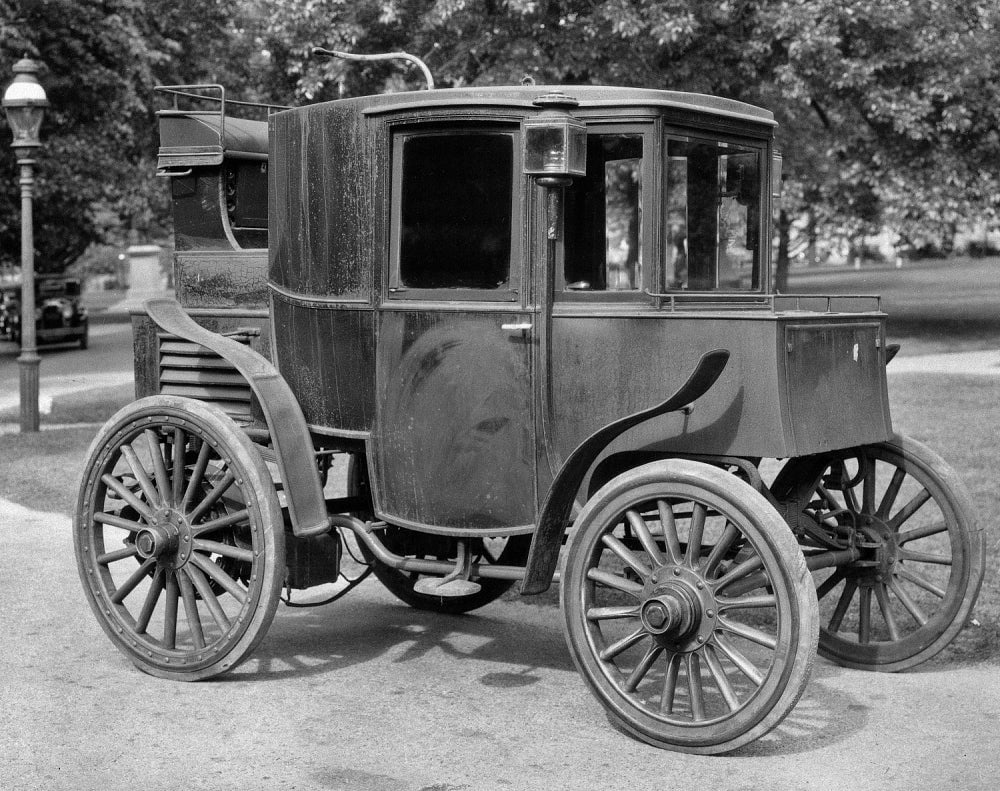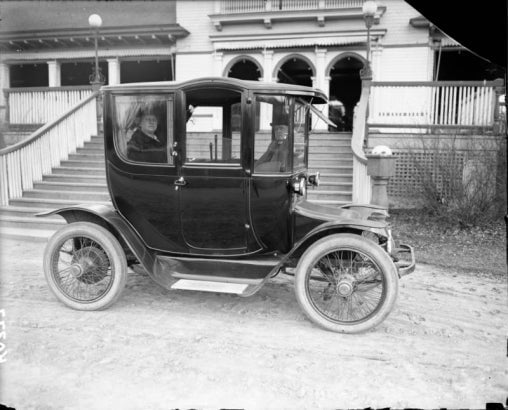Early-1900s EVs were marketed to women because gas cars were too complicated
The notion of masculine and feminine is never far from the business of selling cars. Minivans have long been marketed to soccer moms, and off-road trucks geared toward men, even if they never venture off the pavement. But in the early 1900s, when electric vehicles (EVs) were comfortably outselling gasoline cars, the idealized driver was female. Why that is has everything to do with how we think about gender.


The notion of masculine and feminine is never far from the business of selling cars. Minivans have long been marketed to soccer moms, and off-road trucks geared toward men, even if they never venture off the pavement. But in the early 1900s, when electric vehicles (EVs) were comfortably outselling gasoline cars, the idealized driver was female. Why that is has everything to do with how we think about gender.
EVs were invented in the early 1830s. By the 1890s, American entrepreneurs were building fleets of them to replace horse-drawn carriages in major US cities. New York’s first electric cab arrived in 1897, and the following year Ferdinand Porsche built one of the world’s first hybrid electric vehicles, the P1, with a generator and electric motors in the wheel hubs.
Though a transformative time, the emergence of the personal vehicle was also chaotic. In the late 19th century, at least 1,500 manufacturers were building models that used electricity, gasoline, or even steam for propulsion, according to The Birth of Big Business in the United States, 1860-1914. No single technology dominated the market for years. An 1899 US Census recorded that total automobile production that year included 1,575 electric vehicles, 1,681 steam-powered, and 936 burning gasoline.
This mix persisted for over a decade. One 1912 survey of electric utilities’ vehicle fleets found horses sharing stables with a menagerie of electric and gasoline vehicles. ”The question was simply which type of vehicle best suited a given task,” write researchers Gijs Moms and David Kirsch in the journal Technology and Culture.
It seemed at one point like EVs might win. The largest carmaker in the United States (paywall) was the Electric Vehicle Company. Their vehicles were often simpler, cheaper to operate, and more efficient than those with gasoline engines, which remained dirty and unreliable. By 1915, the number of EVs in the US had soared to about 37,000 (12,000 of which were commercial trucks).
But limitations remained. Despite a few adventurers (p. 175) who drove electric vehicles over hundreds of miles between cities, EVs were were seen as the archetypical urban automobile: moderately paced, clean, and limited to a 30-mile range on a single charge. It was precisely these limitations that made them attractive for men buying them for their wives or daughters.
“It’s an understanding of a vehicle from the point of view from someone who can accept restrictions on their mobility,” says Virginia Scharff, a historian at the University New Mexico and author of Taking the Wheel: Women and the Coming of the Motor Age. “The distinguishing characteristic of femininity is staying in your place.”

Indeed, some of most successful EVs of the time were marketed as “a sitting room on wheels,” according to the Edison Tech Center. Dealerships were appointed as tea rooms, showcasing “the silent-running machines, with little clumps of foliage here and there, like oases in a desert, sheltering dainty tea tables, where the ladies—and their husbands, if they care to come along—will be taken care of while they are being told about the polished cars flitting about on the floor,” write Curtis and Judy Anderson in Electric and Hybrid Cars: A History. Even the founders of gasoline carmakers bought EVs for their wives. Ford’s wife Clara received a Detroit Electric in 1908, a few months before her husband’s Model T went on sale. For the next six years, a new battery-powered car was delivered to the Fords’ driveway every other year.
If a mobile sitting room wasn’t appealing enough, EVs also offered female-friendly simplicity. The vehicles avoided mechanical problems “which often bewilder the owner of gasoline car who is not of mechanical turn of mind,” noted (p. 175) one New York Times reporter in 1909, adding that the “electric [car]…is essentially a ‘woman’s car.'” Another New York Times article (pdf), this time from 1911, pointed out that EVs were preferable for women because “early gasoline cars required more strength to crank than most women possess.”

Eventually, electric vehicles lost the market. It wasn’t just technology, argues David Kirsch, a historian at the University of Maryland. Electric-car makers had bet on a transportation model of leasing out their vehicles rather than selling them to individual buyers, not unlike what we see Uber, Lyft, and Waymo attempting to do today. But that doomed EVs when Americans adopted a culture of personal car ownership.
They were finished off by cheap gasoline, easier electric starters, and the plummeting cost of gasoline cars priced at $650, compared with $1,750 for an electric roadster. Mass-produced gasoline cars soon become the “universal vehicle.” While a few EVs were still being produced into the 1940s, the last successful mass-produced electric car exited the factory around 1920.
Of course, gender never disappeared from the auto market. Marketers tried to revive the female car again in 1955 with The Dodge La Femme, a pink dreamliner with the tagline: “The first and only car designed for Your Majesty… the American woman.” It came with matching calfskin purses, lipstick cases, rain capes, and umbrellas, but failed to gain a following. Only around 2,500 sold nationwide, and it was pulled from showrooms in 1957.
Today, Scharff says, Americans aren’t limited to the stereotypes of pink sedans and jacked-up trucks. The number of women registering full-sized pickups, for example, rose 67% (470,000 vehicles) between 2008 and 2016, according to Consumer Reports.
Yet driving and gender remain inseparable in some places. In 1990, dozens of women in Saudi Arabia defied Islamic religious authorities by driving in a convoy around the capital city of Riyadh. Police stopped them for violating the country’s then-active ban on women driving. “We went through around a year of harassment because they thought we did something that is not acceptable by society,” one of the protesters told NPR. “Wherever you work, you are labeled as a ‘driver’ and you will never be promoted, no matter how good you are.”
It was only last week, 28 years later, that the ban was finally lifted. “All I want to do is take to the roads,” 24-year-old Nour told The Guardian. “As soon as I can, I will.”